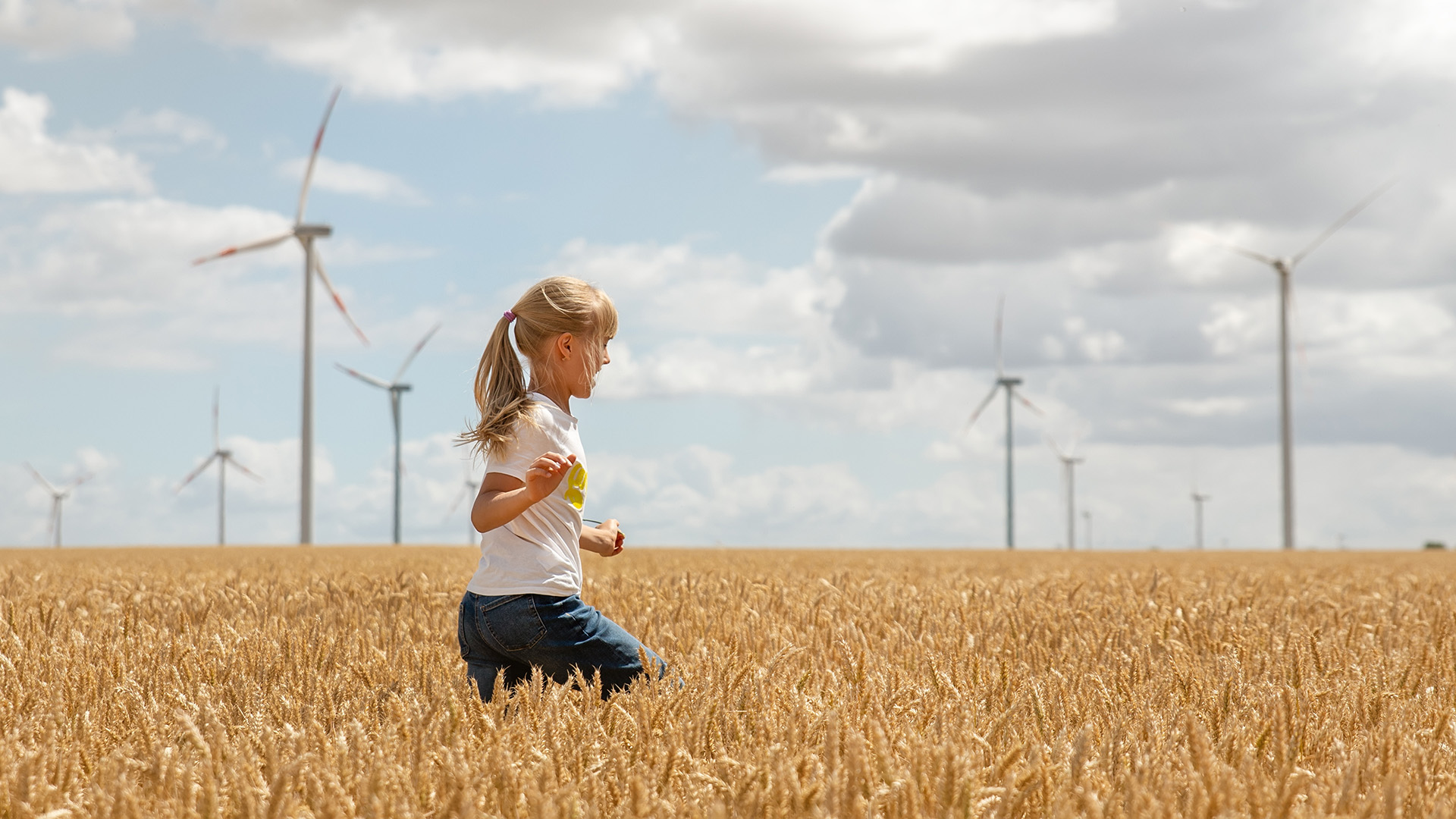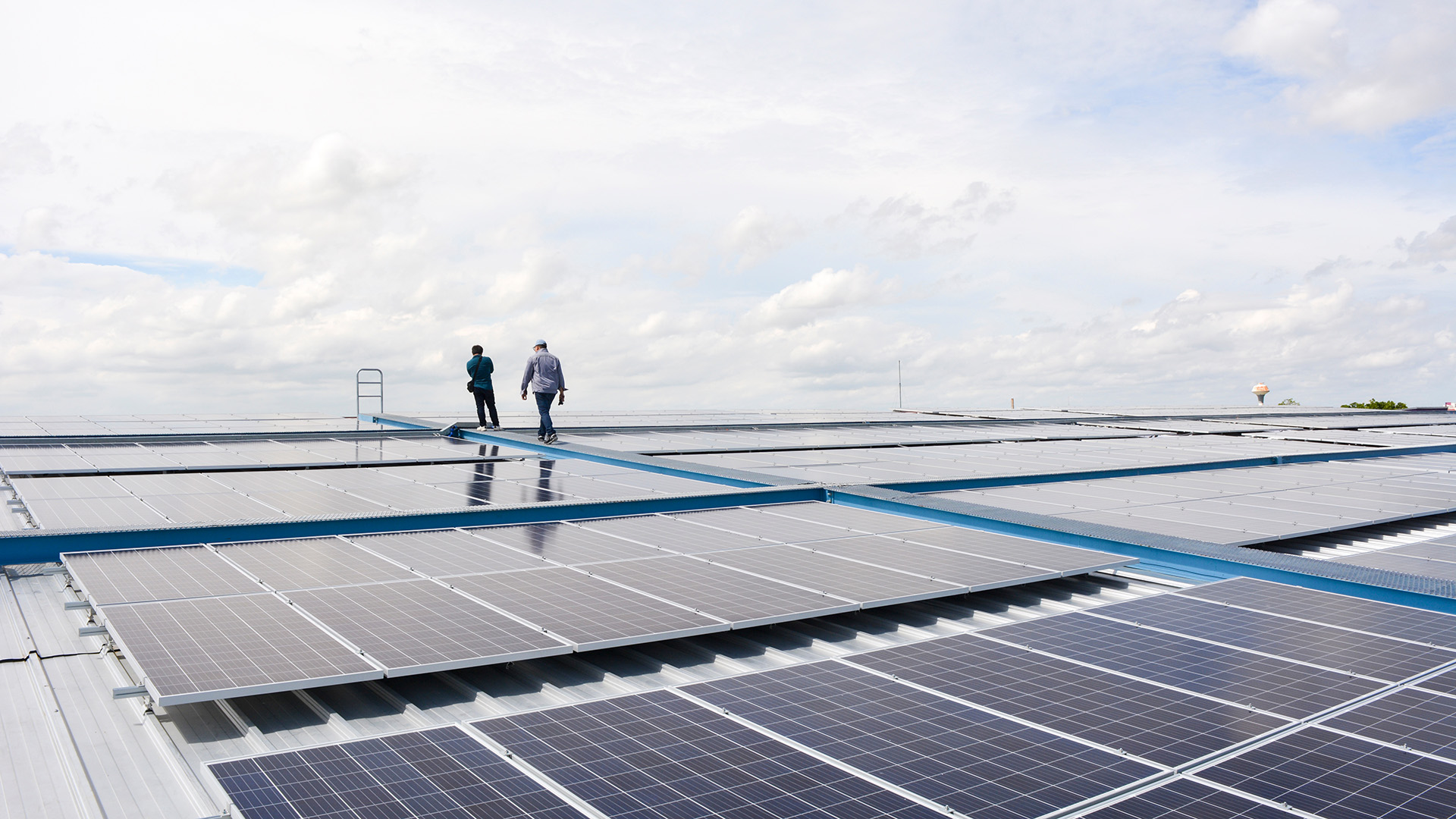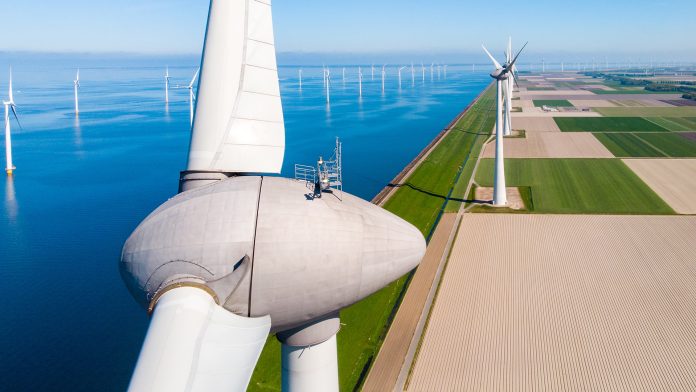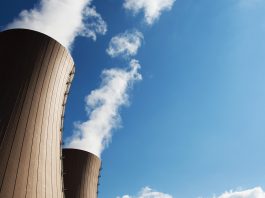The Innovation Platform spoke with André Faaij, Chairman of NERA, about the role of research and collaboration in realising a widespread energy transition in the Netherlands and beyond.
The Dutch government has set the target of halving greenhouse gas emissions by 2030. Recognising the significance of renewable energy in achieving this target, the Netherlands Energy Research Association (NERA) is actively involved in promoting and advancing sustainable energy solutions.
NERA aims to provide sustainable energy for all, supporting universities and research institutions in the development of new technologies that will facilitate a large-scale green transition. To delve into NERA’s role in the Dutch energy transition and provide insights into the research and initiatives driving the sector forward, The Innovation Platform Editor Maddie Hall spoke with NERA Chair André Faaij.
Fostering collaboration and co-operation in the Netherlands energy sector
NERA is typically Dutch in its approach to research, aiming to bring the community together. Closely aligned with the European Energy Research Alliance (EERA), we discuss the research and development agendas of the various bodies, identify gaps, and foster collaboration.
NERA has been able to utilise and build upon EERA’s well-developed infrastructure, with the TNO and many of the universities we support collaborating on EERA’s joint programmes – gathering expert opinions on a variety of subjects in the development of research programmes and proposals.
Regarding national developments in the energy transition, the Netherlands is a busy place. A significant amount of activity is jointly funded by industry and the government. While this has increased the possibilities for research, it has created a busy and somewhat chaotic research landscape that makes the innovation process – from fundamental research to market uptake – inefficient. This has become a key focus of NERA, and we are determined to improve efficiency across the whole innovation system, particularly in regard to research capacity.
NERA’s board consists of university presidents and senior members, providing a vital link to the more political and governance-based discussions around the organisation of research, development, and innovation in the energy field.
In recent years, this has included helping our members to make use of the €20bn National Growth Fund. The first objective is sustainable economic development, allowing for proposals of around €300m and up to €1bn, many of which are centred on energy and circular economy. Examples are a green hydrogen programme and a programme to develop a new generation of solar cells. The latter aims to diversify solar cell technology as well as to establish a new manufacturing industry that can compete with China’s classic PV solar panel industry.
In such a busy research landscape, NERA aims to provide necessary support. Facilitating research initiatives, bringing together partners in innovation, and providing a platform for research will help the industry gain speed and continuity and deliver on research and development.
NERA provides a network for the exchange, communication, and dissemination of information about the wider impact of the research community. Furthermore, it is the national pendant of the European Energy Research Association (EERA), which is an established network and infrastructure in the EU setting.
The importance and challenge of achieving sustainable energy
Every week, a new climate record is broken. Climate change is by far the biggest global challenge we are facing and the primary motivating factor in transitioning as fast as possible to a sustainable energy system. It is crucial that we keep global mean temperature change as low as possible, as failing to do so will be disastrous in terms of economic damage and social disruption.
However, delivering on the total energy transition necessary to mitigate and tackle the dangers of climate change is an immense challenge. It requires the creation of a viable, competitive alternative to fossil fuels, meaning existing green technologies must become more efficient and cheaper, and they must do so in a shorter period of time.
This is certainly achievable with aggressive innovation efforts directed at new and existing technologies such as bio-based products, nuclear energy, and bio- and synthetic, to name a few. A diversified and complementary combination of green technologies will have the capacity to support our energy demand and remove reliance on fossil fuels.
In many areas, Europe is world-leading in its green energy efforts. There is little debate that European countries around the North Sea are leading one of the strongest developments in the global energy field – offshore wind. We also export this technology globally, which strengthens our economies. Besides the overriding argument of tackling, or at least mitigating, climate change, the whole energy transition is a major economic opportunity.
Implementing and achieving sustainable energy solutions is crucial for achieving economic security worldwide. Europe is extremely dependent on foreign energy imports of oil and gas, importing over 90% of its energy supply. While Europe is meeting targets regarding renewable energy, that dependence on imports can and should be reduced to around 10-15% in the long term.

This is possible, given the potential for solar, wind, bioenergy, and other options. This will enable the estimated €1tr/yr currently spent on foreign energy imports to be directed into supporting industries, as well as into the conservation of forestry and agriculture; the latter can play a crucial role in providing sustainable biomass for energy and circular materials.
Establishing domestic and continental energy supplies will provide a more affordable energy system, increased energy security, and stable economic growth.
There is still much to learn, clarify, and legislate on the profitability of green solutions, and this is another challenge to overcome. More sophisticated and stable policy strategies and governance are required to ensure that everyone benefits from this shift.
However, from a macro perspective and in terms of incentivising global investment in green developments, there stands to be a multitude of economic benefits from this energy transition.
Sustainable energy production and consumption in the Netherlands
In the Netherlands, renewable energy currently accounts for approximately 16-17% of the national energy supply, with the largest share coming from biomass, followed by wind and solar. For electricity, in particular, a striking 50% of last year’s energy supply came from renewable sources. There has been a lot of positive progress in increasing energy efficiency, and we are on track to meet the 2030 targets.
Investment in the renewables sector is booming, and we are seeing aspirations and planning for its capacity to grow alongside it. The Netherlands is aiming for over 20 gigawatts in wind power capacity by 2030, a considerable increase from its current output of 5 gigawatts, and while ambitious, the pipeline of projects aiming to achieve this is full.
The same can be said for initiatives in the solar and biomass industries. Thanks to this strong growth and awareness, these targets will not only be met but potentially even surpassed, as the profitability of many of these projects is a competitive alternative to high gas prices.
Electrification has gained momentum over the last few years, with a rapid expansion in the number of electric vehicles and the development of the associated infrastructure. Electric cars are now dropping in price and, in many cases, are cheaper over their lifetime than gasoline cars, making them an affordable alternative.
Overall, we are seeing that sectors keep innovating, scaling up, and advancing their performance, which is driving down the cost factors presented by the purchase of capital and fluctuating prices of critical raw materials.
This is aided by the transition by major utility firms, manufacturing industries, and electricity firms to invest in renewable rather than fossil energy, which is fundamental to achieving green energy goals and sets an example that renewable energy is the future. Those who lag behind will pay the price in terms of missing out on business opportunities.
Key sustainable energy initiatives or policies implemented in the Netherlands
The European Emission Trading System (ETS) and Carbon Border Adjustment Mechanism (CBAM) have been hugely influential in both the Netherlands and Europe as a whole. It is one of the most powerful European measures to combat emissions, putting a price on carbon-intensive imports to avoid unstable competition.
In the Dutch arena, we see a complex landscape of support measures across a variety of technologies in research, development, and demonstration. There are dedicated targets, sector-oriented agreements – such as individual industries for the built environment – and a wide range of investment support and benefits.
There has been steady progress in efficiency improvement, especially in industry. Given that the industry is also facing the pressure of high energy prices, increased attention has been paid to developing efficiency standards and streamlining policy, which has helped to reduce energy use per unit of output. Nevertheless, the full transformation of industry to new processes that are more circular and carbon neutral still needs to be realised in the coming decades.
For the built environment, we should now routinely convert 300,000 houses a year to much better insulation and use renewable sources to achieve climate neutrality. We are far from achieving this, as there are additional challenges in involving communities and co-ordinating this effort on a local level. However, many projects are underway that should help us meet this target.
The National Energy System Plan (NPE) System is an important policy step forward. It provides a solid sketch of how the energy system can transform over time within bandwidths and meet the set climate targets.
The plan outlines the Dutch priorities for the energy transition, considering the required action, direction for innovation, investment, and more clarity for the industry. Recently, emphasis has developed to focus on meeting 2050 targets, as focusing on 2030 only may partly conflict with what is needed in the period after that.
Challenges faced in the Netherlands’ transition to a more sustainable energy system
International transport is a major area for improvement for the Netherlands, with Schipol airport and major harbours responsible for heavy gasoline, diesel, and kerosene usage. Solving this challenge will require increased sector organisation and legislation, with targets to be set and faster combined with innovation. Synthetic and biofuels can contribute to this, and we are currently investigating the potential role of green ammonia in the shipping sector.
Another key consideration is grid congestion. Demand for renewable electricity is already exceeding supply, partly due to the crisis in Ukraine and the subsequent soaring gas prices. We have seen a huge increase in the installation of solar panels and heat pumps in an effort to avoid natural gas, which has skyrocketed demand and expansion of grid capacity (as well as flexibility options), which is lagging behind.

While geopolitical factors such as this are difficult to predict, it was certainly possible to foresee that the demand and supply of renewable electricity was going to increase as part of meeting green targets, and this is a lesson to learn from for the coming decades in terms of good planning.
The widespread rollout of green technologies also demands appropriate infrastructure and stable planning. An important consideration when scaling up these technologies is developing the capabilities to source, process, manufacture, and recycle critical raw materials in a circular way. The key to this will lie in designing and planning the entire supply chain, prioritising sustainability at every step. Guidelines and roadmaps must be established to direct areas of research and innovation that can facilitate an efficient and comprehensive scale-up, taking circularity into account.
Developing best practice guidelines and standards is complicated by incredibly complex legal procedures. Objections to building work or sustainable energy development are notorious and are currently a subject of contention and potentially major policy intervention. On a government level, policymakers are considering the legal options to override some complaints to speed up progress. This is a work in progress and requires a balance to be struck in terms of responding and adapting to objections while still rolling out green infrastructure on time.
Dutch research capacity is world-leading, with high-quality innovation, considerable funding, and diverse research efforts across sectors. Our scientific community’s commitment to collaboration (very much including international) and open science is a huge benefit. There is an awareness of key societal needs and the time pressure to deliver on issues such as the energy transition, circular economy, biodiversity, etc.
However, this openness to collaboration and working towards common goals is not reflected at the governance and policy level, where competition, still seen as a leading principle, is encouraged and expected. If we are to deliver timely solutions to the energy transition, we must collaborate, not compete – a concept that the research community is eager to act upon. NERA is part of this debate, encouraging a mission-oriented, faster, and more efficient way of working that fosters collaboration and advocates for an open science attitude to research.
Recent innovations in sustainable energy research
The Netherlands is keen to collaborate within Europe and beyond in its research efforts, and this is clearly reflected in recent achievements.
The biobased arena is full of innovation and industrial activity. In recent years, a Dutch company has developed a biobased alternative for PET, a commonly used plastic. While PET can be fully recycled, having two circular, sustainable options, with the ability to be recycled back to monomers, could potentially reduce the industry’s carbon footprint by 95%.
This is no longer a laboratory idea but a commercial process. It bodes well for subsequent innovation in the biobased field, as the combination of high-quality chemistry, engineering, technology, and industry is proving incredibly effective.
The carbon capture utilisation and storage (CCUS) industry is another sector receiving much attention. The Porthos project intends to transport CO2 from the Port of Rotterdam to be stored offshore and is currently awaiting an investment decision. This world-leading project utilises the chemical industry’s refining capacity to collect CO2 from emitters and store it in an empty gas field in the North Sea.
As the first step to the anticipated larger CO2 infrastructure, the project is developing our knowledge of the geology, technology, and logistics of offshore CCUS. Alongside the storage capabilities, this research also encourages consideration of utilisation options, looking ahead to CO2 chemistry for synthetic fuels or chemicals.
Offshore energy is a continued area of innovation for the Netherlands and Europe in general. Key industry players in Denmark and Germany, combined with Dutch research efforts in offshore logistics and installation, have created a competitive offshore energy industry. In fact, the offshore projects in the North Sea and across Europe have attracted world markets, resulting in collaborations with Korea, Japan, and Taiwan, among others.
This, in turn, has been followed by a strong push for electrolyser technology and investment, as well as a focus on the green hydrogen supply that is a component of scaling up offshore energy.
NERA’s role in transforming the research environment
As an umbrella organisation, NERA considers research development, demonstration, and deployment, identifying gaps and areas for initiative. We act as an intermediary between the research community and governing bodies, communicating the workflow and needs of researchers to improve the environment.
In recent years, NERA has strongly diversified its board, adopting a more interdisciplinary approach. Engineers and natural scientists have dominated classic energy research. However, the total energy transition will be, as the name suggests, a complete societal shift with challenges beyond what can be addressed by scientific research and development alone. An efficient and effective transition will require the input of psychologists, social scientists, and legal experts as part of the discussions. NERA’s network and activities have equally shifted to reflect this.
Conclusion
Despite the time pressure, there remains a lot of criticism around many alternative energy solutions, with many pleading for the few options that are truly sustainable. While, in principle, we can transition solely to solar and wind power, the investment and the infrastructure required to do so would be huge, and the steps needed to convert the power for different uses means this presents an inefficient and, therefore, expensive alternative.
This attitude ignores the immense challenge presented by the green transition. We use a huge amount of energy, and its uses are diverse. To realise a sustainable energy transition, it is very important to have the whole portfolio of options available and understand where each option and combination of options delivers best.
NERA has adopted a ‘technology agnostic’ attitude to energy transition, believing that speed must be the primary objective. With climate targets to meet and increasing pressure to reduce emissions at a reasonable cost, it is crucial that viable alternatives are able to be rolled out on a large scale in a timely manner.
The faster we are able to achieve the transformation to a profitable renewable energy system, the sooner we will see the economic and environmental benefits.
Please note, this article will also appear in the 18th edition of our quarterly publication.









